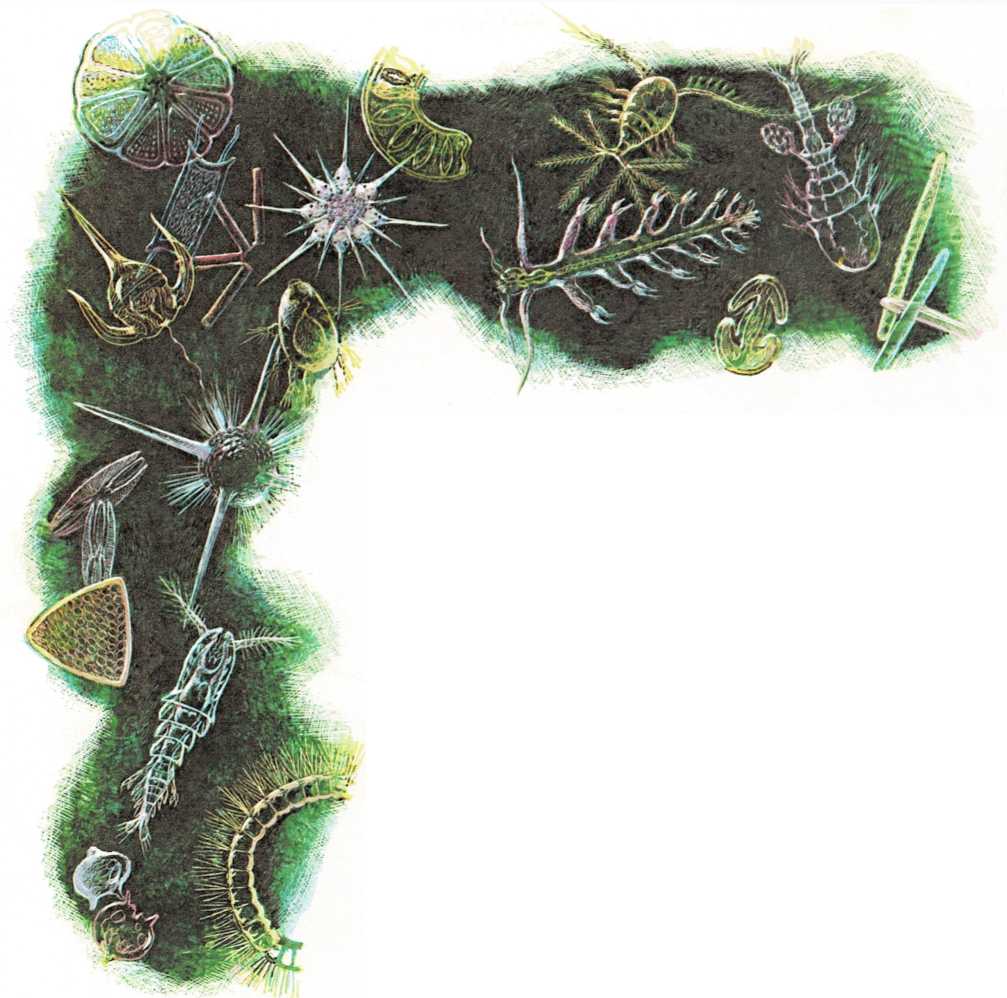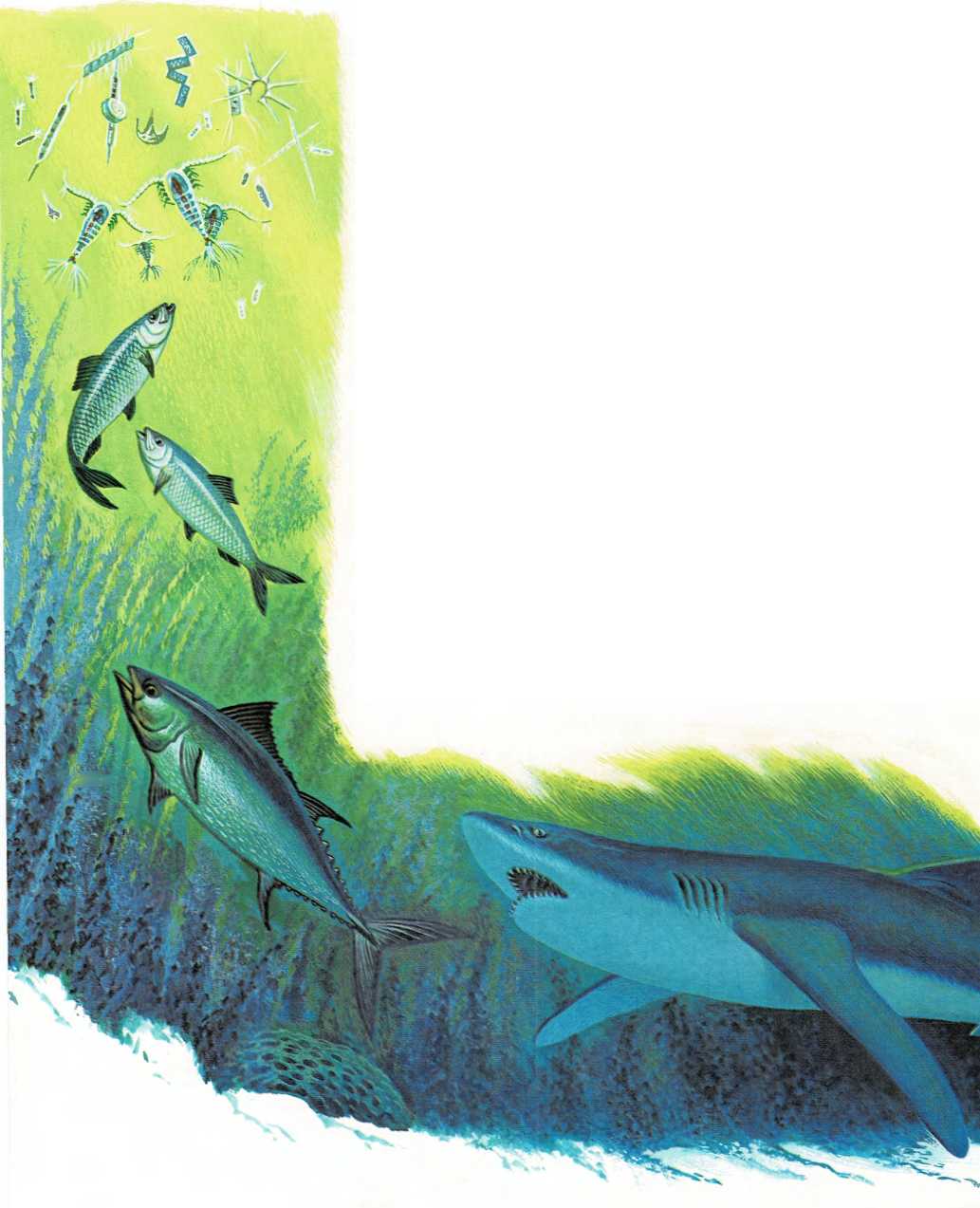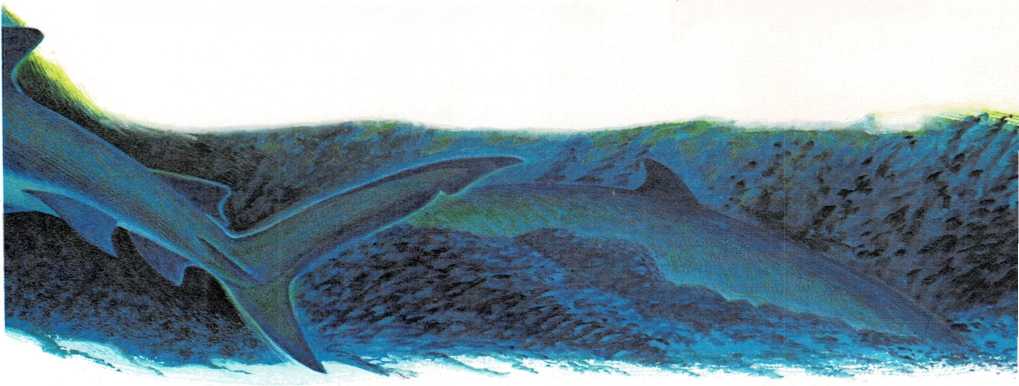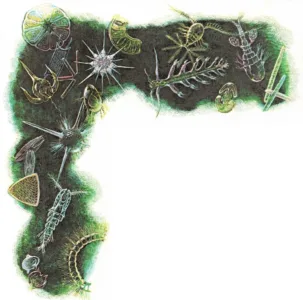
Animals of the sea
Animals of the sea

Billions of tiny plants and animals drift in huge groups in the sea.
These creatures are so small that most of them can be seen only with a
microscope.
Life in the sea
The sea is filled with many different kinds of plants and animals. Some
live in warm, tropical waters and others live in cold, polar seas. Some
live close to shore and some live far from land. Some live close to the
surface and some live deep down in the ocean.
The plants of the ocean, like those of the land, depend upon sunlight
for their life. For sunlight contains energy, and all living things need
this energy to stay alive. Sea plants, like most land plants, take the
energy in sunlight and turn it into food. They store this food and use
it a little at a time.
Some sea animals get their energy by eating plants. Other animals get
their energy by eating the plant-eaters. And animals that live in the
deepest, darkest parts of the ocean get their energy from plants and
animals that live above them, die, and drift down. This way of passing
energy along is called the food chain.
The food chain of the ocean begins with tiny plants such as those called
diatoms [(dy]{.smallcaps} uh tahms). Diatoms drift on or near the
surface. They are so tiny that you need a microscope to see them. But
when billions of them drift together, they color the water green.
Diatoms look like no plant you have ever seen. They have no roots,
leaves, or stems. A diatom is just a blob of greenish-brown jelly inside
a two-piece, glassy shell.
There are many different kinds of these tiny plants. The shells of some
are square, others are round, or shaped like pillows, rods, or stars.
Some diatoms float alone; others join together in long chains.
Drifting and swimming within the huge clouds of diatoms are billions of
other little living things. Some are tiny animals, no bigger than the
plants. Some are the eggs of fish and other creatures. Some are newly
hatched baby clams, worms, lobsters, snails, and other animals. Some are
tiny, shrimplike animals called copepods [(koh]{.smallcaps} puh pahdz).
These huge masses of drifting plants and animals are called plankton
[(plangk]{.smallcaps} tuhn), a word that means \”wandering.” The
plankton is like a great \”meadow” where all kinds of animals live and
eat. In fact, it is often called \”the pasture of the sea.”
The copepods and some of the other tiny animals in the plankton feed on
the diatoms. And these animals, in turn, are eaten by small fish and
other animals that stay in or near the plankton to be near their food.
Large animals, such as tuna and dolphin, feed on the small fish. And
even bigger animals, such as sharks, eat both big and little fish.
Thus, around, above, and below the plankton there are many kinds of
swimming

animals. Most are fish, but there are also squid, whales, turtles, and
other creatures.
Although these animals swim about, they can’t live just anywhere. Some
can live only in warm water; others only in cold water. Some, because of
the way their bodies are made, can live only at certain depths. If they
swim too far up or down, the change in the pressure of the water might
kill them.
Both animals and plants live on the bottom. Animals are found in shallow
water near shore and in the depths of the ocean. But plants cannot live
any deeper than sunlight can reach. In clear water, sunlight reaches
down only about six hundred feet (180 meters). Then the water grows
darker and darker. Finally, below about seventeen hundred feet (510 m),
the water is pitch-black.
Most kinds of the leafy plants that are usually called seaweed grow in
shallow water near shore. Masses of seaweed form

underwater forests in which many kinds of animals live. For some of
these animals the seaweed is food. For others, it is a good hiding
place. For still others, it is a rich hunting ground where they can find
many animals to eat.
Many bottom-dwelling animals walk or crawl about. Some can swim and some
cannot. Others, such as oysters, attach themselves to the bottom. They
spend their entire adult life in one place. Some food drifts down to
them. And some is carried to them by currents and tides.
When a sea animal dies, it slowly sinks. Its body is usually eaten by
animals living at lower depths. And when these animals die, they sink
down and become food for creatures that live even deeper, or that live
on the bottom.
Dead animals that are not eaten sink to the bottom. Their bodies slowly
break down into chemicals. These chemicals spread through the water and
provide food for plants. And so the food chain starts all over again.
The sea, like the land, is a place where every creature depends upon
other creatures for life—and all life depends upon the sun.
Tiny sea plants are eaten by little animals. These animals are eaten by
small fish. Large fish and other animals eat smaller creatures. Dead
animals and plants rot and put chemicals into the water. Tiny plants use
the chemicals. Thus, all the plants and animals in the sea are part of a
great food chain.

